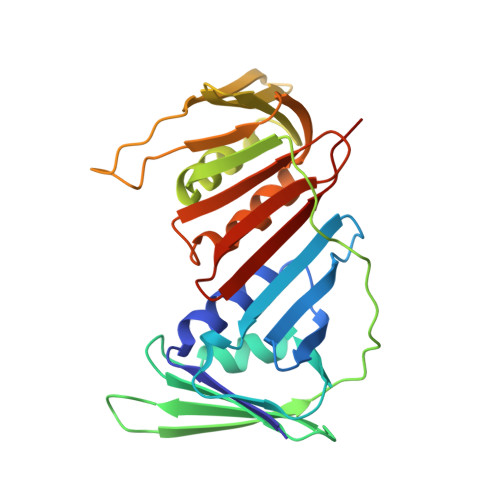Structure of the sliding clamp from the fungal pathogen Aspergillus fumigatus (AfumPCNA) and interactions with Human p21.
Marshall, A.C., Kroker, A.J., Murray, L.A., Gronthos, K., Rajapaksha, H., Wegener, K.L., Bruning, J.B.(2017) FEBS J 284: 985-1002
- PubMed: 28165677
- DOI: https://doi.org/10.1111/febs.14035
- Primary Citation of Related Structures:
5TUP - PubMed Abstract:
The fungal pathogen Aspergillus fumigatus has been implicated in a drastic increase in life-threatening infections over the past decade. However, compared to other microbial pathogens, little is known about the essential molecular processes of this organism. One such fundamental process is DNA replication. The protein responsible for ensuring processive DNA replication is PCNA (proliferating cell nuclear antigen, also known as the sliding clamp), which clamps the replicative polymerase to DNA. Here we present the first crystal structure of a sliding clamp from a pathogenic fungus (A. fumigatus), at 2.6Å. Surprisingly, the structure bears more similarity to the human sliding clamp than other available fungal sliding clamps. Reflecting this, fluorescence polarization experiments demonstrated that AfumPCNA interacts with the PCNA-interacting protein (PIP-box) motif of human p21 with an affinity (K d ) of 3.1 μm. Molecular dynamics simulations were carried out to better understand how AfumPCNA interacts with human p21. These simulations revealed that the PIP-box bound to AfuPCNA forms a secondary structure similar to that observed in the human complex, with a central 3 10 helix contacting the hydrophobic surface pocket of AfumPCNA as well as a β-strand that forms an antiparallel sheet with the AfumPCNA surface. Differences in the 3 10 helix interaction with PCNA, attributed to residue Thr131 of AfumPCNA, and a less stable β-strand formation, attributed to residues Gln123 and His125 of AfumPCNA, are likely causes of the over 10-fold lower affinity of the p21 PIP-box for AfumPCNA as compared to hPCNA.
Organizational Affiliation:
School of Biological Sciences, The University of Adelaide, South Australia, Australia.














